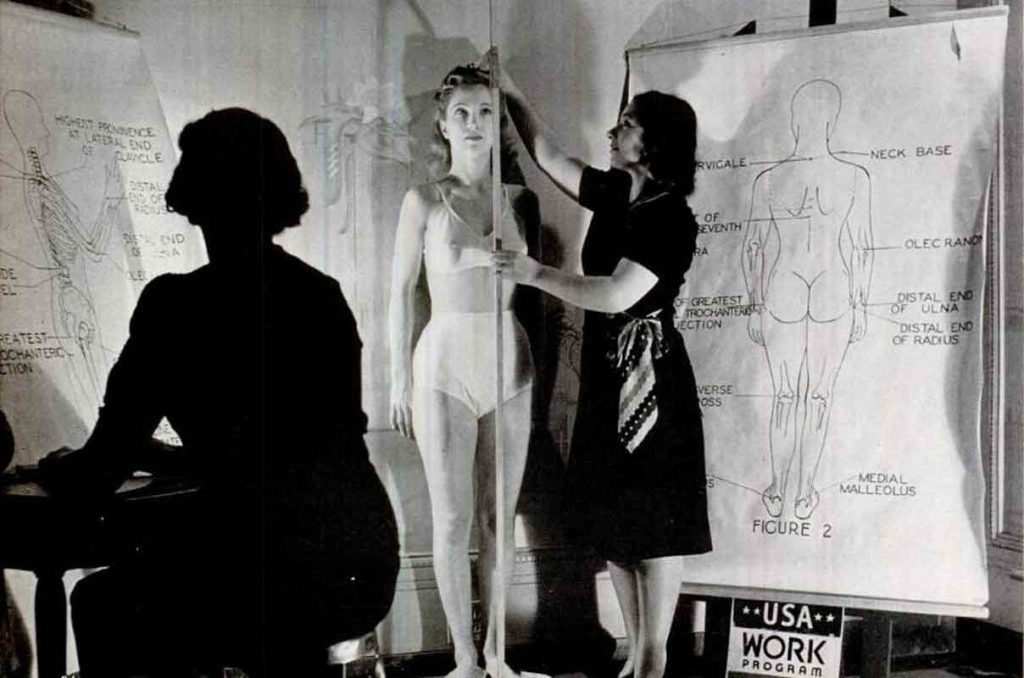The root of the problem
Standard clothing sizes were made to serve fast fashion consumerism and led to mediocre-fitting clothes.
Since E. Butterick developed sewing patterns for mass production principles in 1863 nothing much has developed on how measurements are taken and transcribed into standardized sewing patterns and sizing charts that are used worldwide.
With the Industrial Revolutions we gained the advantages of efficiency, mass availability and lower costs, but had to compromise with mediocre-fitting clothes due to standardized and commonly used sewing patterns and size charts that by using a few manually measured data points.

Standardized size charts were last updated in 1970 for men and 1990 for women and are compiled from the averages of the population at that time.
They are based on 2D manual measured data points and fail to take the diverse distribution of body proportions into consideration. The fashion industry is making clothes for calculated averages but people with standard measurements don’t exist.
Today’s mass production of so-so-fitting clothes results in...
Lorem ipsum dolor sit amet, consectetur adipiscing elit. Ut elit tellus, luctus nec ullamcorper mattis, pulvinar dapibus leo.
- consumer frustration
- high return rates
- overproduction
- waste of time and resources
- textile waste
- and pollution
Bad fit
70% of all clothes don’t fit the consumers they’re intended for. More than 50% of all clothing returns are caused by size fitting problems.
Overproduction
The processes lack relevant data and statistics about the clothes people could and would wear if they would fit them. This results in 40% overproduction and billions of returns.
Clothing waste
Because of this 30% of the clothes produced are getting trashed. This amounts to a worth of 400 billion Euro. Clothing waste is the second biggest polluter of the world.

